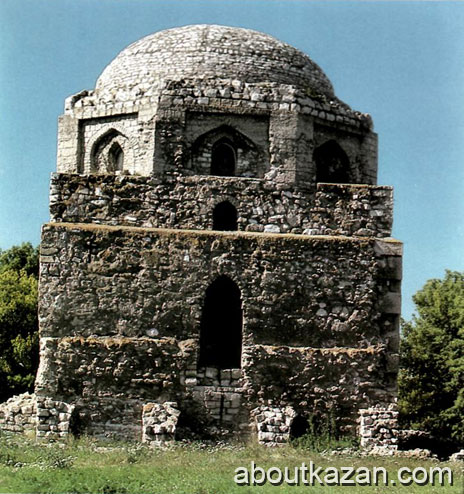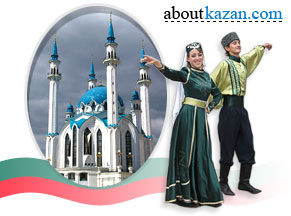Kazan Russia — a thousand-year Russian city
Kazan Kremlin brief history
The Kazan Kremlin, a magnificent architectural ensemble bearing traces of many centuries of building activity, is enclosed by high, white stone walls with characteristic loop-holes and thirteen hipped-roofed towers. The most remarkable building of the Kazan Kremlin (kermen = fortress in Tatar) is the Suyumbika Tower, seven storeys and 58 metres high. Its distinctive profile, visible from all sides, is balanced by the contours of the Spassky (Saviour) Tower which stands at the opposite end of the Kazan Kremlin.
Kazan city Kremlin - Suyumbika tower

The Kazan city fortress was formerly surrounded by water on three sides: the River Kazanka formed the northern boundary, to the east lay three lakes, and to the west was an artificial waterway, the Bulak Canal, constructed long ago by Tatar builders to join the Kazanka with Lake Kaban. This canal served both defense and navigation needs: goods from the Volga and Kazanka rivers could be brought right up to the walls of the Kazan city. In medieval times the Kazan Kremlin ramparts were constructed of oak beams, while the buildings inside were of both wood and stone.
Towards the middle of the sixteenth century, the time of the conquest of the Kazan city, 30,000 people lived within the walls of the citadel, which then had approximately the same boundaries as today. A number of the entrance and trading quarter towers have not survived; the rest were reconstructed when the Kremlin ramparts were rebuilt in stone (1556-1558). The Kazan Kremlin was just as impressive in olden times.
Ancient Kazan city stone building

A Russian chronicler, describing the capture of Kazan city, recounts how Ivan the Terrible was astonished at "the unusual beauty of the walls of the fortress of the city". The English traveler Jenkinson wrote in his memoirs in 1558: "Kazan is a beautiful city, built in the Russian and Tatar style, with a strong castle, standing on a high hill."
Starting in 1556, Russian stonemasons, under the direction of the architects I. Shiriay and P. Yakovlev, rebuilt the Kazan Kremlin walls and towers in the Pskov style, adding a few new towers, including the Spassky, which now serves as the official entrance to the territory of the Kremlin. The Russians, as already mentioned, first destroyed all the structures of the Kremlin that were connected with the Muslim history of Kazan city.
For more information about Russia you may visit the following Russian cities, towns and regions guidebook
© 2007—2012 Alex Grachov, Sergey Kozin. All rights reserved. Copyright/IP Policy.






